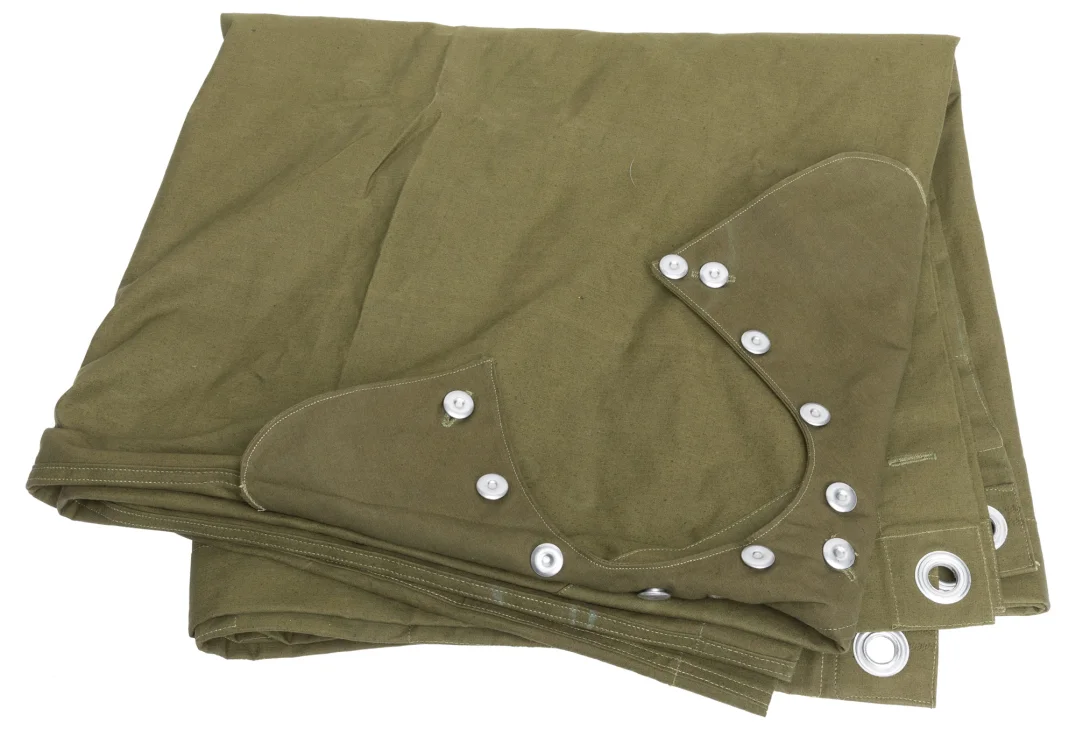
A rectangular shelter-half/rain poncho of very peculiar design. Works anywhere you need a large, waterproof piece of canvas: on a camping trip, at festivals, or at war.
In ye olden days, soldiers were often issued with half a tent each and when the time came, they would pair up to assemble their tent and crawl into it to escape the hard world.
The set would normally comprise of the shelter half, carrying a bag that doubles as a hood, a multi-piece pole, and some pegs and guylines. Available now are only the shelter fabrics themselves, in two slightly different designs.
One model has buttons and the other has snap fasteners. The latter is slightly lighter and has more sail grommets. The different models are not compatible with each other! By attaching several sheets together, you can build anything from a 2-man tent up to an airplane hangar.
Belgian outlandish thinking strikes again
To flip off other NATO countries, probably, the Belgians made their shelter half rectangular as most Eastern Bloc countries did during the Cold War. Then, they discarded the idea of having drawstrings to wear the sheet as a rain poncho and made an opening roughly in the center for the head. Not straight as on the US rain poncho, though, but diagonal. Further, to confuse everyone, they made the hood a separate item that doubles as a carrying pouch for the sheet and also has a feature called "being able to disappear".
Each side of the sheet has buttons or snap fasteners and the corners have sail grommets for tent poles and attachment.
Despite its unique design, the Belgian shelter half is entirely serviceable both as a lavvu fabric and rain cape.
Technical specifications
| Item | Metric | Imperial |
|---|---|---|
| Length | 174 cm | 68.5" |
| Width | 159 cm | 62.6" |
| Weight (w. Snap fasteners) | 1.2 kg | 2.6 lbs. |
| Weight (w. Buttons) | 1.3 kg | 2.9 lbs. |
Belgian Surplus
These have not been used and buttonholes are tight as virgins. Due to army-style storage, however, the fabrics smell pretty bad and metal pieces may have oxidation and patina on them.
David G. en
Donn F. en
Johan G. en